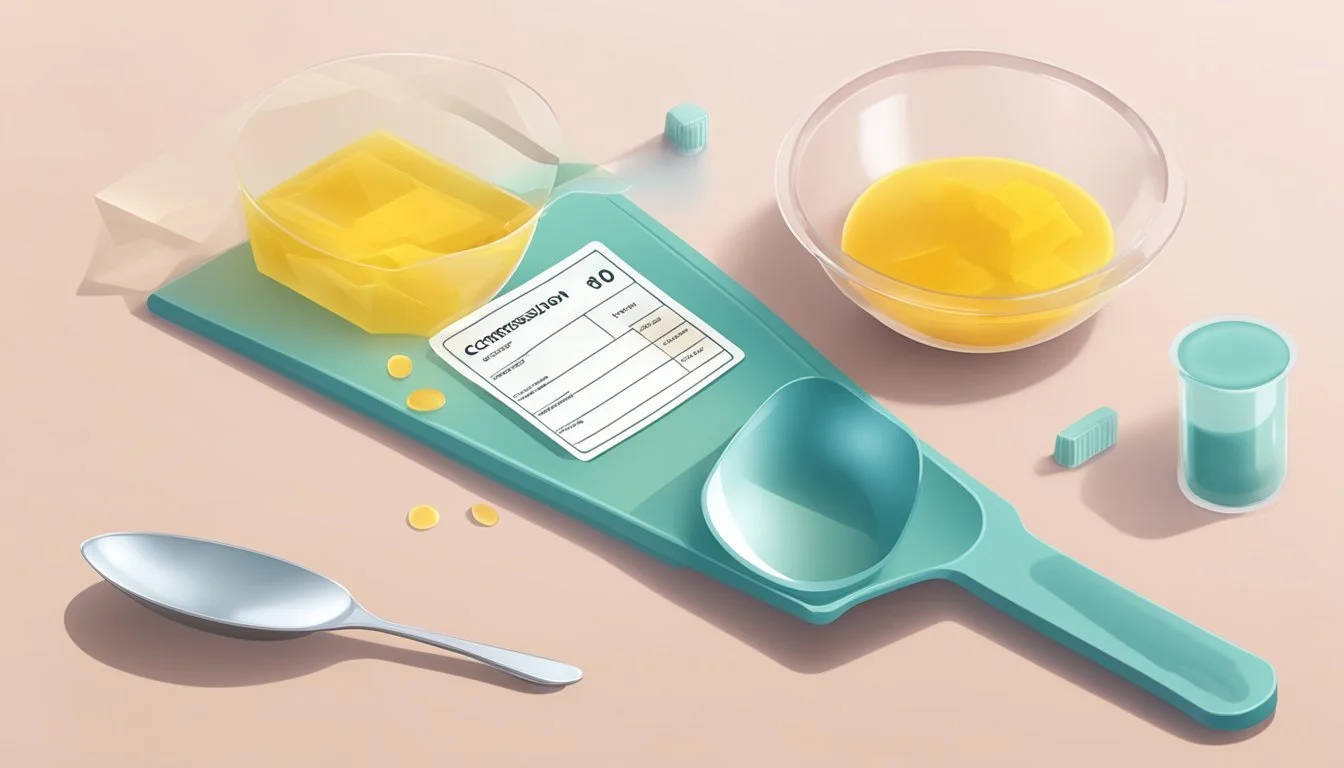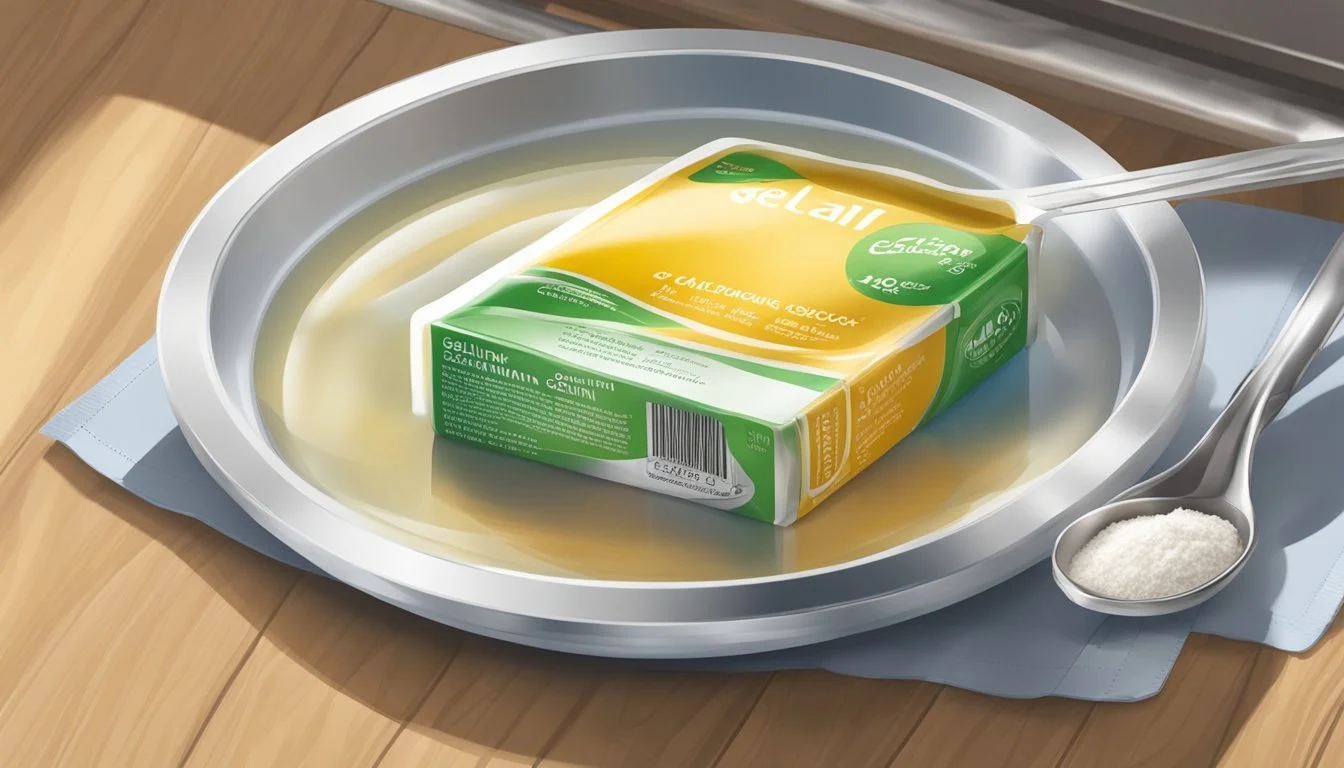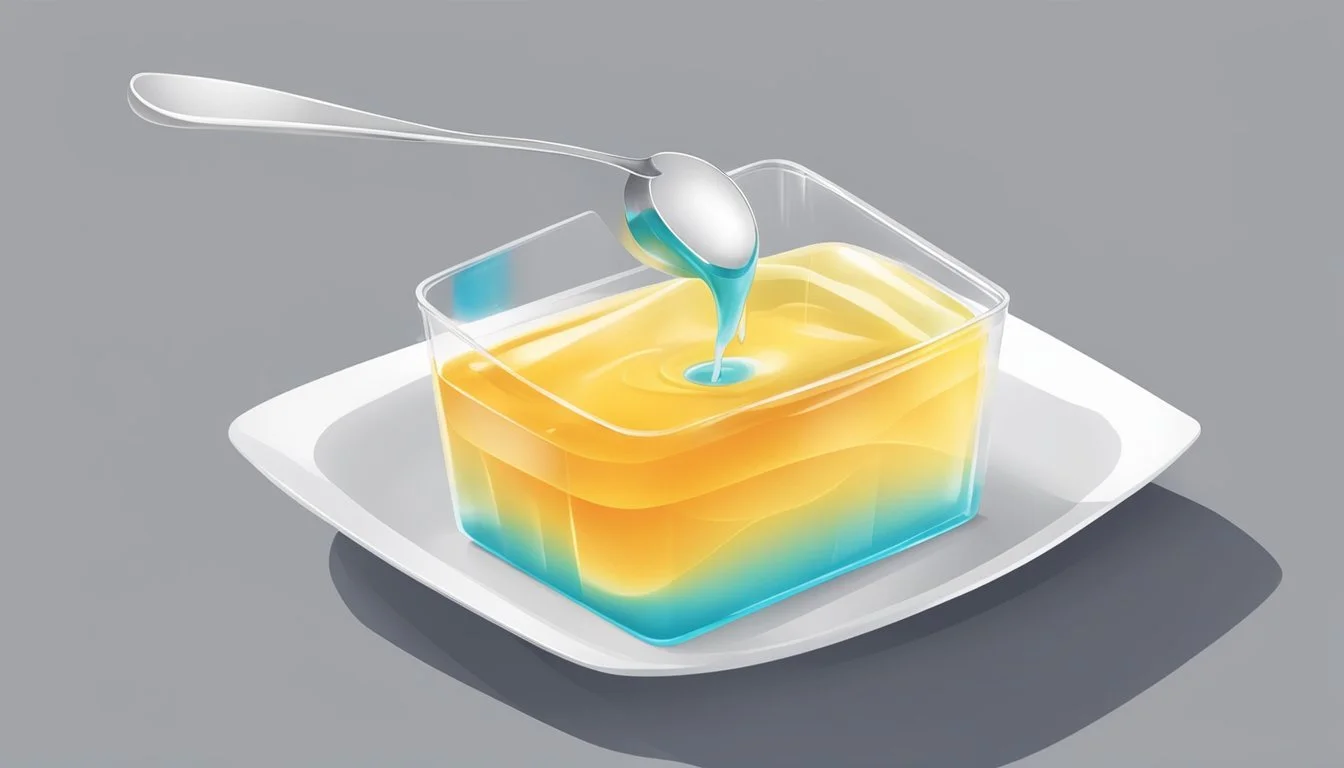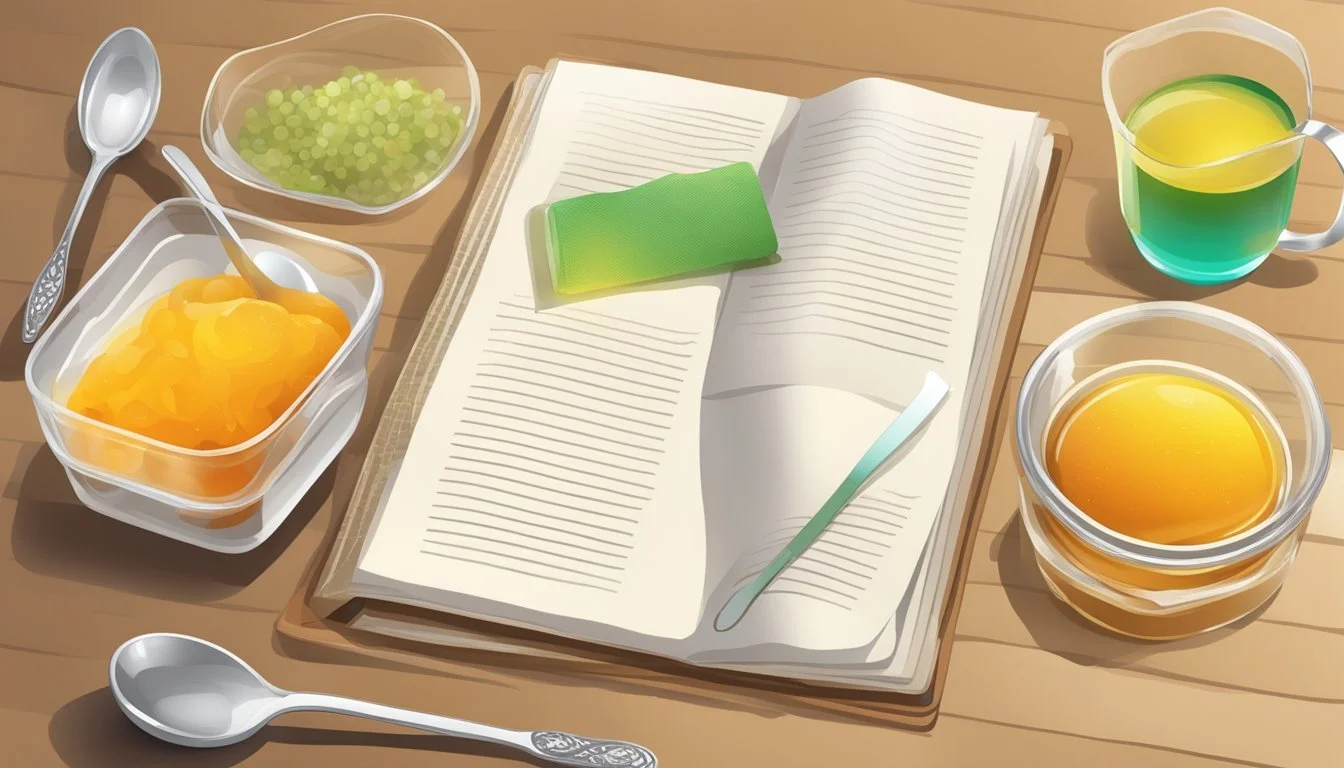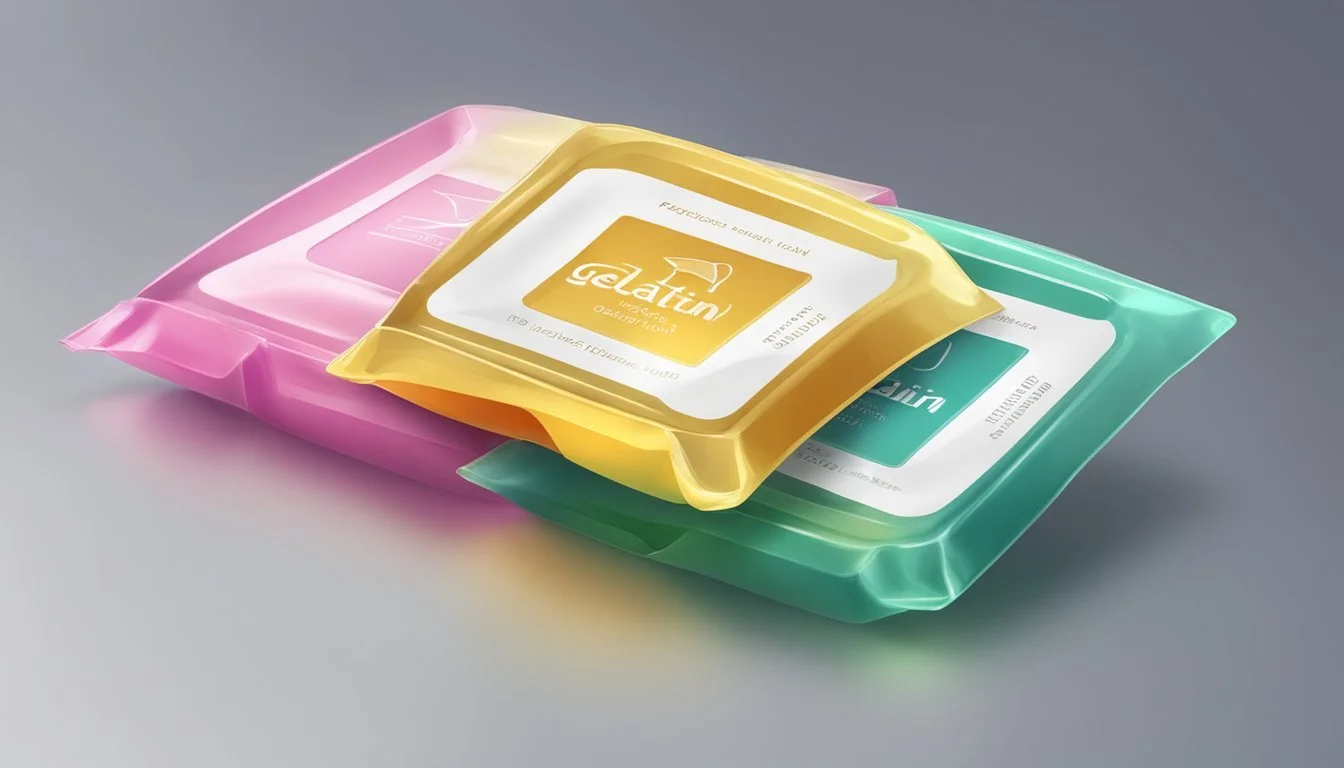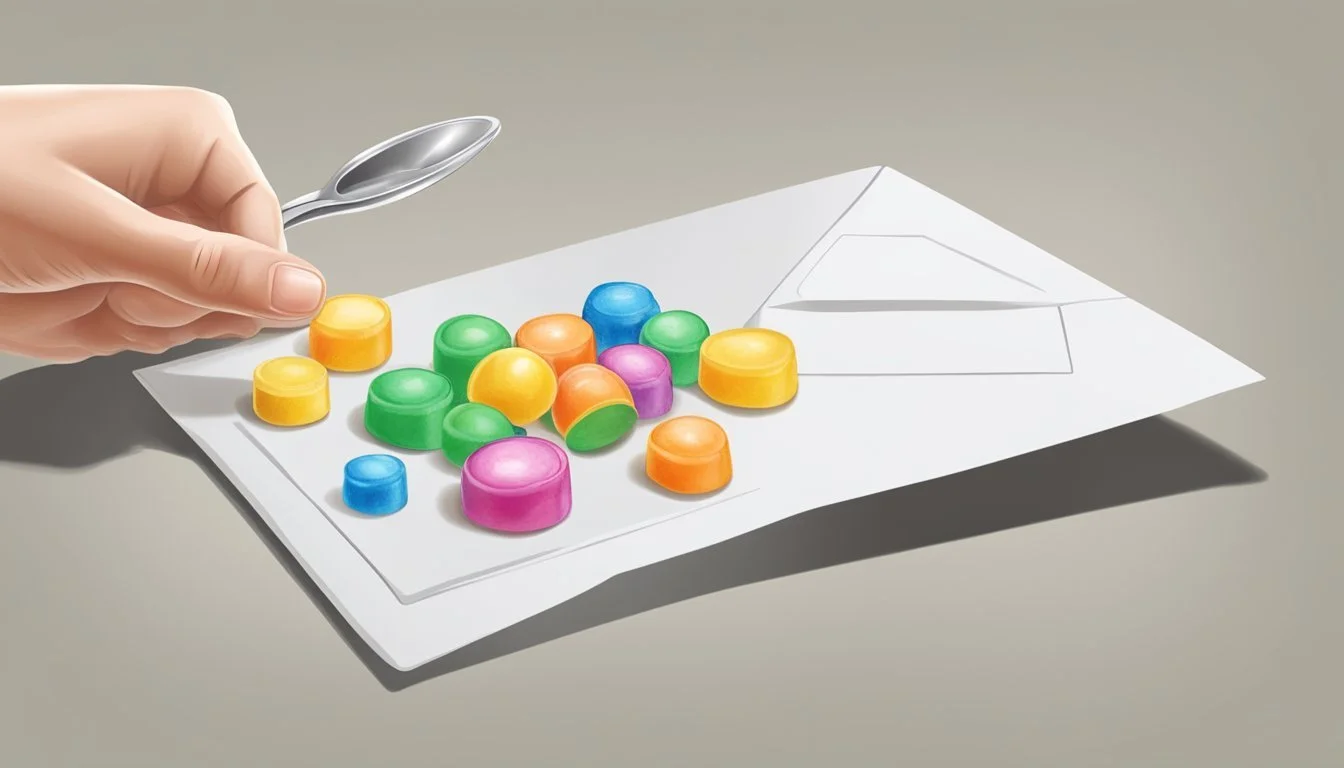How Many Tablespoons in an Envelope of Gelatin?
Understanding Conversion Rates
Understanding the quantity of gelatin in an envelope is essential when preparing a recipe that calls for this gelling agent. Gelatin comes in two common forms: powdered and sheet. In the United States, the powdered form is more widely used, typically available in small packets or envelopes. An envelope of gelatin, such as the ones produced by the brand Knox, contains approximately 2 1/2 teaspoons of unflavored gelatin powder.
This amount is sufficient to gel a standard recipe that requires setting two cups of liquid. When a recipe refers to an 'envelope of gelatin,' it is often referring to this standard U.S. packet size. Chefs and home cooks use this measurement to ensure the desired consistency of dishes ranging from molds to desserts. If a recipe specifies tablespoons, one should note that 1 tablespoon of gelatin is equivalent to 1 envelope of Knox unflavored gelatin. Proper measurement is crucial to achieve the correct set and texture in the finished dish.
Understanding Gelatin
Gelatin is a versatile protein derived from animal collagen and is used in various culinary applications. It is available in different forms and has substitutes for those following vegetarian or kosher diets, emphasizing its adaptability in cooking and baking.
Types of Gelatin
Gelatin can be found in several forms, each with its unique properties and uses. The most common types are:
Powdered Gelatin: This is gelatin in a granulated form, and it's the most widely used. It needs to be bloomed in a cool liquid before being dissolved in a warm solution.
Sheet Gelatin: Also known as leaf gelatin or gelatine, this type comes in thin, almost transparent sheets that also require blooming. Many professionals prefer sheet gelatin for its consistent results.
Flavored Gelatin: This variety comes pre-sweetened and flavored, often with color added. It's mainly used to make simple desserts like jellies or as a component in certain sweets.
Agar-Agar: Although not gelatin, agar (also known as agar agar) is a popular vegetarian alternative, derived from seaweed, that behaves similarly to gelatin but sets more firmly.
One brand of powdered gelatin commonly found in stores is Knox Gelatin. This brand, among others, provides the unflavored variety which is essential for culinary use without altering the taste of the dish.
Gelatin as a Cooking Ingredient
As a cooking ingredient, gelatin's role is primarily as a gelling agent, providing a smooth, gel-like texture to various dishes. It's used to thicken soups and sauces, set mousses and desserts, and create gelatinous components in savory or sweet dishes.
Here are some specifics on using unflavored gelatin:
Ratio: Typically, one envelope of powdered gelatin (about 1 tablespoon or 1/4 ounce) will jell 2 cups of liquid.
Bloom: Gelatin must first be bloomed in a small amount of cold liquid for a few minutes, then dissolved in hot liquid to activate its gelling properties.
Vegetarian and Kosher Alternatives: For those with dietary restrictions, alternatives to gelatin like agar can be used. Agar sets more firmly than gelatin, so the ratios and methods can vary.
Unflavored gelatin is preferred in savory dishes or when the chef does not want to introduce additional flavors. When working with gelatin sheets, remember that they are not directly interchangeable with powdered gelatin; one packet of powdered gelatin is roughly equivalent to three sheets of gelatin.
Preparation Basics
Before setting out to use gelatin in recipes, it’s important to understand the proper preparation processes involved. Success with gelatin begins with two key steps: dissolving and setting, each of which requires precision and an understanding of how temperature affects the gelatinization process.
Dissolving Gelatin
Gelatin must first be dissolved in liquid to ensure it disperses evenly in a recipe. Start by sprinkling the gelatin granules over a cold liquid to bloom or soften. Typically, about 1/4 cup of cold water per envelope is sufficient. It’s essential to allow it to sit for 1 minute for proper initial softening.
Next, the softened gelatin needs to be dissolved. This can be done by adding a boiling liquid and stirring until the granules are fully dissolved, usually within a few minutes. Alternatively, if microwaving, combine the softened gelatin with 1/4 cup of cold water in a glass measuring cup, then microwave on High (100%) for 30 to 40 seconds, stirring once halfway through the heating process.
Setting Gelatin
After the gelatin has dissolved, it needs to set to form a gel. In most cases, two cups of liquid per one envelope of gelatin is needed for standard firmness. The dissolved mixture should be combined with any remaining ingredients per the recipe and then refrigerated until it sets.
For gelatin to properly set, it generally needs to be refrigerated at a low temperature for several hours. The exact setting time can vary based on the amount of liquid used and other added ingredients. To expedite the setting process, one can begin with ingredients that are already cold, or even partially set the gelatin in an ice water bath before refrigerating.
Measurements and Conversions
Accurate measurements are essential when working with gelatine as they affect the outcome of recipes. Understanding the relationship between tablespoons and gelatine envelopes will ensure proper setting qualities.
Tablespoons to Gelatin Envelope Conversion
One envelope of gelatin typically contains about 2 1/2 teaspoons, which is roughly equivalent to 7 grams. When converting to tablespoons, which are a larger unit, it is important to note that 3 teaspoons make up 1 tablespoon. Therefore, an envelope of gelatin is approximately 3/4 tablespoon. This conversion is especially useful when a recipe calls for tablespoons instead of envelopes.
1 envelope (quarter-ounce) of gelatin = 3/4 tablespoon
Weight and Volume Considerations
When measuring gelatin, precision matters, whether one is using a scale for weight or measuring cups and spoons for volume. Packets may sometimes be slightly inconsistent in weight, so for accuracy, especially when dealing with bulk quantities, it's prudent to weigh the gelatin using a scale. Typically, packaging will indicate that an envelope corresponds to a weight of 7 grams. Measuring by weight ensures consistency regardless of potential packaging discrepancies. If a recipe specifies in volume, transfer the weighted gelatin amount using the correct conversion to tablespoons or teaspoons as needed.
Weight: 1 envelope = 7 grams
Volume: Weighg 7 grams and convert to 3/4 tablespoon or equivalent in teaspoons.
Culinary Techniques
When using an envelope of gelatin in culinary applications, it is essential to understand that each envelope contains about 1 tablespoon of gelatin, which can set 2 cups of liquid into a firm texture. This precision is crucial for achieving the desired consistency in desserts and other dishes.
Enhancing Desserts with Gelatin
Gelatin is a favorite ingredient to add body and shape to a variety of desserts. When making mousses or gelatin molds, chefs often rely on the firming properties of gelatin to achieve the perfect texture. Desserts like jello, which requires one envelope of gelatin per two cups of water, can be altered by adjusting the amount of sugar or adding ingredients like cream to create a richer, more indulgent treat. For a unique twist, one might incorporate ginger to introduce a subtly warm and spicy note.
When preparing desserts that involve gelatin, the method is quite straightforward:
Hydration: Sprinkle the gelatin powder over a cold liquid (usually water or milk for creamier desserts) to allow the granules to swell, a process often referred to as blooming.
Dissolving: After blooming, the gelatin should be gently heated until fully dissolved, preventing any grainy texture in the final dessert.
Incorporation: Once dissolved, the mixture is combined with other ingredients of the dessert before being allowed to chill and set.
Gelatin in Sauces and Custards
Gelatin can also play an integral role in creating the perfect sauce or custard, providing a silky, cohesive consistency. For sauces, incorporating a small amount of gelatin can prevent separation and create a more substantial mouthfeel. When gelatin is used in custards, it provides stability and enhances the firmness without compromising the smoothness.
Key steps for using gelatin in sauces and custards:
Start by dispersing the gelatin in a cold base, such as water or milk, to bloom it.
After blooming, mix the gelatin with the heated main components of the sauce or custard.
Continuously whisk the mixture to achieve a homogeneous consistency and ensure that the gelatin is completely absorbed.
In both applications, chefs have to carefully balance the gelatin with other ingredients, maintaining the delicate ratio that preserves the integrity and flavor of the dish without overwhelming it with the texture of the gelatin.
Troubleshooting
When working with gelatin, understanding the conversion between envelopes and tablespoons is critical. However, some common issues may arise that require troubleshooting to ensure a successful outcome.
Converting Gelatin Amounts:
An envelope of gelatin typically equates to about 2 1/2 teaspoons. If a recipe calls for more, the conversion is straightforward; use one envelope for each tablespoon required.
Enzymes in Fruits:
Certain fruits, like pineapple, kiwi, and papaya, contain enzymes that can prevent gelatin from setting correctly. Cooking these fruits can deactivate the enzymes, allowing the gelatin to set.
Dissolving Gelatin:
Bloom Gelatin: Always begin by blooming your gelatin in a small amount of cold liquid for at least 5 minutes.
Heat Gradually: Next, dissolve it over low heat in a saucepan, stirring constantly to avoid clumps.
Avoid Boiling: High heat can destroy the gelatin's setting properties, so keep the temperature low.
Unmolding Jell-O:
To unmold Jell-O or a sorbet mixture set with gelatin, briefly dip the mold in warm water to loosen it without melting the contents.
Use these tips to avoid common pitfalls when using gelatin in your culinary endeavors. Remember that attention to detail and proper handling can make the difference between a dish that sets perfectly and one that doesn't achieve the desired texture.
Dietary Considerations
When incorporating gelatin into a diet, it's important to consider dietary restrictions and preferences, such as vegetarian or vegan lifestyles, as well as potential allergies and sensitivities. Here we discuss suitable alternatives for those unable to consume traditional gelatin, which is derived from animal products.
Vegetarian and Vegan Alternatives
Traditional gelatin is a protein obtained by boiling skin, tendons, ligaments, and/or bones with water. It is typically derived from pork or beef sources, making it unsuitable for vegetarians and vegans. However, there are vegetarian alternatives available, most notably agar or agar agar, which is a gelling agent derived from seaweed. It can be substituted for gelatin in a 1:1 ratio by weight, though it sets differently and may alter the texture of the final product.
Vegetarian gelatin packet equivalents:
1 tablespoon of gelatin = 1 tablespoon of agar powder
1 gelatin packet (~2 1/2 teaspoons or 7g) = 1 slightly heaped tablespoon of agar flakes
Allergies and Sensitivities
Individuals with sensitivities or allergies to specific animal products need to pay attention to the type of gelatin they consume. Some people may be allergic to bovine (beef) or porcine (pork) gelatin. In these cases, ensuring the source of gelatin is crucial, or opting for non-animal alternatives like the aforementioned agar may be necessary. It's also important to check labels carefully on food products, as gelatin is commonly used in various supplements and processed foods.
Creative Uses and Recipes
Gelatin, a versatile ingredient, offers countless creative uses beyond the traditional jello mold. It's important to note that one envelope of gelatin is equivalent to about 2 1/2 teaspoons, which can typically set 2 cups of liquid. Here are some innovative culinary ideas:
Homemade Fruit Sorbet: For a refreshing treat, chefs can blend their favorite fruits like kiwi or pineapple to make a puree, sweeten to taste, and then stabilize with gelatin before freezing. The gelatin helps prevent the formation of ice crystals and results in a smooth sorbet texture.
Yogurt Parfaits: A spoonful of gelatin can help homemade yogurt maintain a firm and creamy consistency. Layer the yogurt with fresh fruit and granola to create a delicious breakfast or dessert parfait.
Gelatin-Sheet Ice Cream: Confectioners may use gelatin sheets to enhance homemade ice cream. The sheets must be bloomed in cold water before being melted and whisked into the ice cream base. This technique improves the ice cream's body, preventing it from melting too quickly.
Fruit Gels: Cooks can dissolve a jello packet with hot water and incorporate fresh fruit to create a fruit gel dessert. However, enzymes in certain fruits, such as fresh pineapple and kiwi, can break down gelatin, preventing it from setting properly. These fruits should be cooked first to deactivate the enzymes.
Molded Desserts: Enthusiasts can explore various molds to craft intricate gelatin desserts. Pour the liquid gelatin into a mold and let it set in the refrigerator - not the freezer, as freezing can alter the texture. Unmolding the set gelatin onto a plate reveals a dessert that is both visually appealing and delightfully wobbly.
Storage and Shelf Life
When it comes to storing gelatin, the condition of the storage space plays a critical role in extending its shelf life. Unopened envelopes of gelatin, such as those from Knox, are best kept in a cool, dry place, away from moisture and direct sunlight. Under these optimal conditions, the shelf life of gelatin can generally last for 2 to 3 years from the date of manufacture.
One should note the storage of an open gelatin packet. Once opened, it's important to transfer any unused gelatin to an airtight container to prevent moisture from affecting its quality and gelling properties. In a pantry, an opened gelatin packet should be used within several months for best results.
It’s not common to refrigerate or freeze the gelatin powder itself, as room temperature is suitable for long-term storage. However, once it's prepared, gelatin-based dishes should be refrigerated and consumed within one week. Here’s a simple breakdown:
Unopened Package: For maximum potency, use within 2-3 years.
Opened Package: Store in an airtight container; use within several months.
Prepared Gelatin: Refrigerate in an airtight container; consume within one week.
Should gelatin lose its ability to gel over time, this typically indicates a decrease in potency, rather than spoilage. Products may well last beyond the given timeframe, yet for optimal gelling results, adhering to the recommended shelf life is advisable.
FAQs and Common Concerns
When working with gelatin, precise measurements and proper substitution are critical for achieving the desired consistency and mouthfeel in your recipe. Here we address common questions involving gelatin measurements and conversions.
Substituting Gelatin Types
Converting Between Powdered and Sheet Gelatin:
Powdered Gelatin: Typically, one envelope of powdered gelatin equals about 2 1/2 teaspoons or can also be considered as 1 tablespoon. This is enough to gel about 2 cups of liquid.
Sheet Gelatin: Also known as leaf gelatin, is often used in professional kitchens. One packet of powdered gelatin is roughly equivalent to 3 sheets of gelatin.
When substituting, one must be mindful of the bloom strength (a measure of gelatin stiffness). Different brands or types of gelatin may have varying bloom strengths, which will affect the set of a gel. When substituting sheet for powdered gelatin, proper blooming in cold liquid is essential before melting and incorporating it into your dish.
Adjusting Gelatin Strength
The strength of gelatin is measured by its bloom value, affecting the stiffness and mouthfeel. A higher bloom value indicates a stronger gelatin which sets firmer and can have a different mouthfeel. When adjusting gelatin strength:
More Gelatin: Adding more gelatin than a recipe calls for will result in a firmer, stiffer end product.
Less Gelatin: Conversely, using less will yield a softer, less stiff texture.
Keep in mind, the amount of liquid being gelled must align with the quantity of gelatin used. Straying too far from the recommended gelatin-to-liquid ratio can lead to results that are either too rubbery or too loose.



